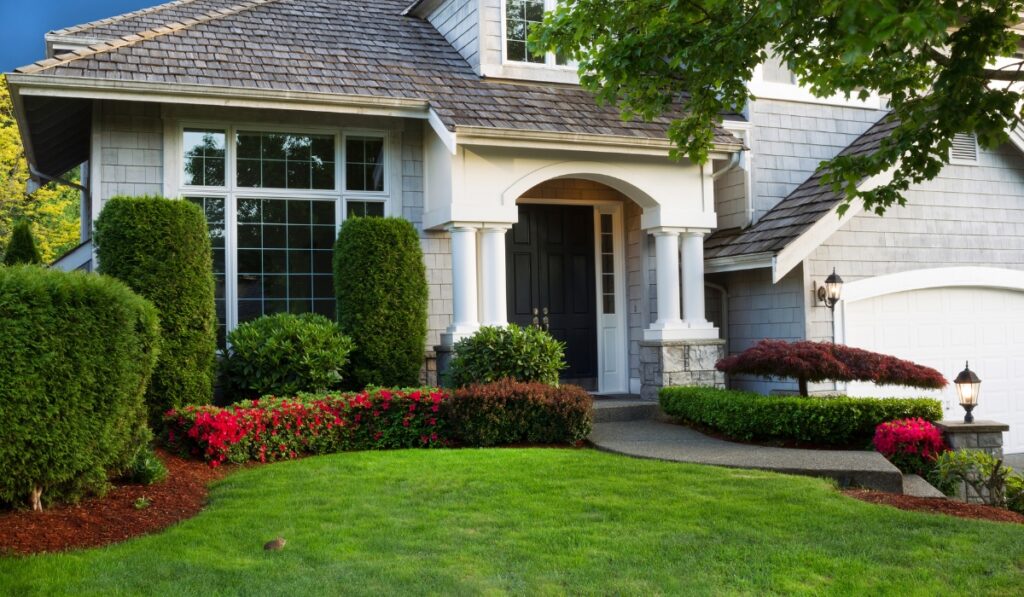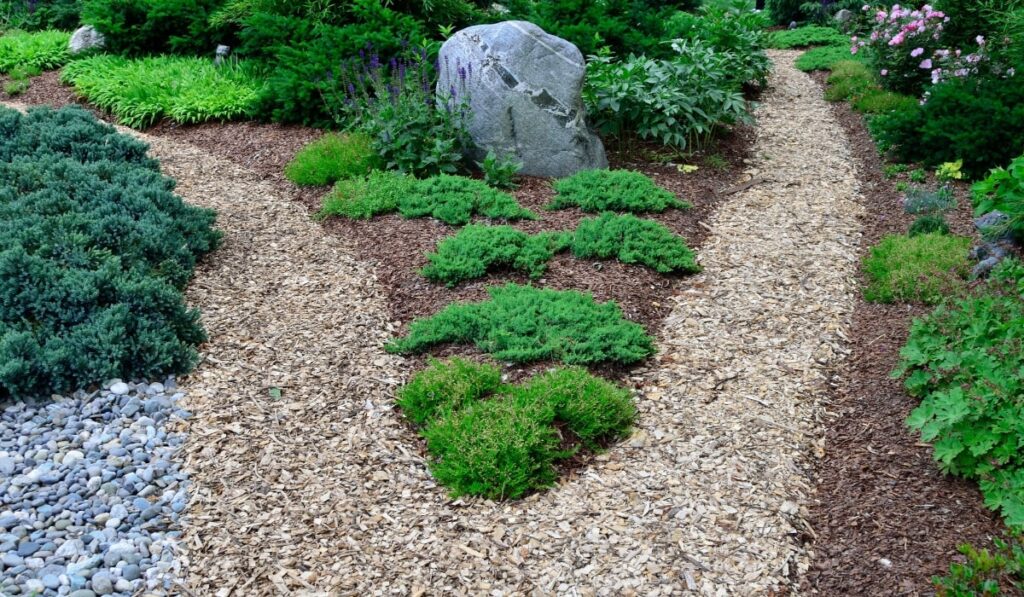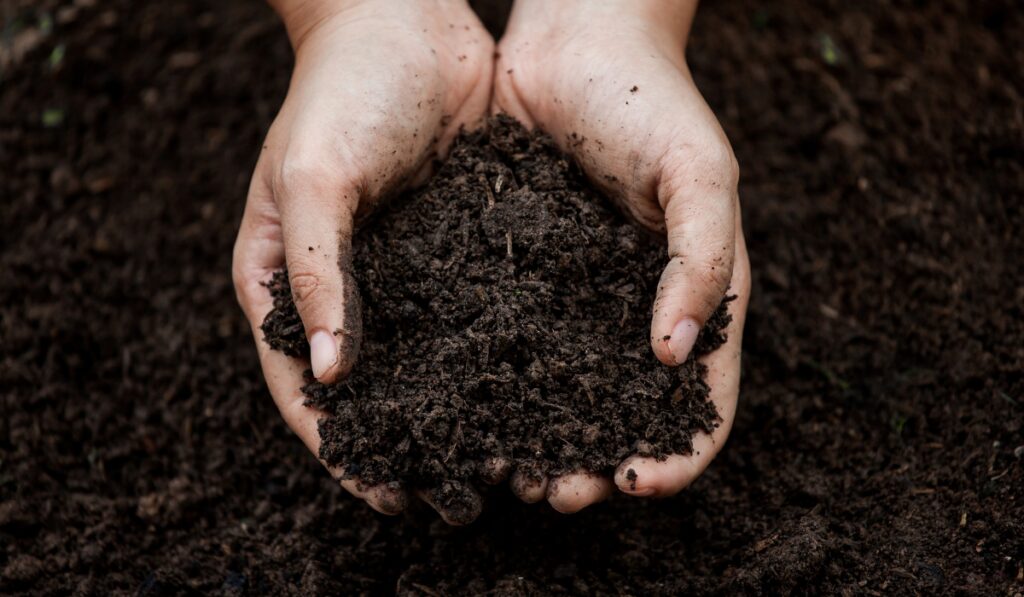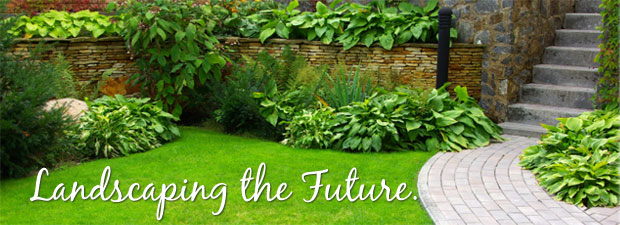Posts Tagged property value
The Benefits of Professional Landscaping on Property Value in California

In California, where the climate and outdoor lifestyle play a significant role in everyday life, the appeal of a well-maintained landscape cannot be overstated. Whether you’re in bustling cities like Los Angeles, charming coastal towns, or the serene suburbs of Rohnert Park, professional landscaping offers more than just aesthetic enhancement. It significantly boosts property value and has a profound impact on curb appeal. Here’s a deeper look at how professional landscaping can be a wise investment for California homeowners.
Enhanced Curb Appeal
First impressions are crucial, and the exterior of your home is the first thing potential buyers see. A professionally landscaped property with lush greenery, balanced designs, and vibrant colors instantly boosts curb appeal, making your home stand out in the market. Well-chosen plants and hardscape elements that complement the architectural style of your home can create a compelling first impression that increases overall marketability.
Increased Property Value
Studies have shown that professional landscaping can increase a property’s value by up to 15%. In California’s competitive real estate market, this can translate to a significant return on investment. The aesthetic and functional improvements made through landscaping not only add immediate value but also contribute to long-term property appreciation.
Cost-Effective Renovations
Compared to other home renovations like kitchen remodels or adding a swimming pool, landscaping is a cost-effective way to enhance property value. The modifications can be as simple as adding flower beds, installing a new lawn, or as elaborate as creating outdoor living spaces with kitchens and fire pits. Each project can be tailored to fit a variety of budgets and still yield high returns.
Reduced Time on Market
A well-landscaped property not only attracts more buyers but can also lead to a quicker sale. Homes with mature gardens and thoughtful layouts tend to sell faster than their barren counterparts. This is particularly important in markets where the speed of sale can be as critical as the sale price.
Improved Energy Efficiency
Professional landscaping can also improve the energy efficiency of your home. Proper placement of trees and shrubs can provide shade during the hot California summers, reducing the need for air conditioning. Additionally, greenery can act as a windbreak and insulate the home during cooler months, reducing heating costs.
Eco-Friendly Benefits
In a state that values sustainability, professional landscaping using native plants and eco-friendly practices can also appeal to environmentally conscious buyers. Techniques such as xeriscaping, efficient irrigation systems, and the use of mulch contribute to a landscape that requires less water and maintenance, which is particularly appealing in drought-prone areas like California.
Aesthetic and Functional Harmony
A professional landscaper can strategically design your outdoor space to balance aesthetics with functionality. This means creating spaces that are not only beautiful but also usable, such as outdoor seating areas, vegetable gardens, and pathways that enhance the living experience and appeal to a broader range of buyers.
Partner with DK Landscaping
At DK Landscaping, we understand the unique climatic and cultural nuances of landscaping in California. We are committed to transforming your outdoor spaces in ways that not only reflect your personal style but also maximize your property’s value and appeal. Contact us today to learn how our expert services can enhance your property in Rohnert Park and beyond, setting the stage for a rewarding and profitable sale.
Seasonal Landscaping: Tips for Maintaining Your Yard

Seasonal landscaping is a practice that involves designing and maintaining outdoor spaces to reflect the changing seasons. This type of landscaping can be used to create a visually appealing and functional outdoor space that is suitable for different seasons throughout the year. Seasonal landscaping involves the use of plants, flowers, and other outdoor features that are specific to each season.
One of the main benefits of seasonal landscaping is that it can help to create a sense of continuity and connection between the indoors and outdoors. By incorporating seasonal elements into a landscape design, homeowners can create a seamless transition between their indoor and outdoor living spaces. This can help to create a more inviting and welcoming environment for guests, as well as a more enjoyable outdoor living experience for the homeowner.
Another benefit of seasonal landscaping is that it can help to increase the value of a property. A well-designed and maintained outdoor space can significantly enhance the curb appeal of a home, which can make it more attractive to potential buyers. Additionally, seasonal landscaping can help to create a unique and memorable outdoor space that sets a home apart from others in the area.
Understanding Seasonal Landscaping
Benefits of Seasonal Landscaping
Seasonal landscaping is an important aspect of maintaining a healthy and beautiful outdoor space. By changing the plants and design elements throughout the year, homeowners can ensure that their yard remains visually appealing and functional. Some benefits of seasonal landscaping include:
- Improved curb appeal: By changing the look of the yard throughout the year, homeowners can improve curb appeal and make their property stand out in the neighborhood.
- Increased property value: A well-maintained yard can increase the value of a property, and seasonal landscaping is an easy way to keep the yard looking its best.
- Enhanced outdoor living: By incorporating seasonal elements such as outdoor seating, lighting, and fire pits, homeowners can create an outdoor living space that can be enjoyed throughout the year.
Key Seasonal Changes
In order to create a successful seasonal landscape, it is important to understand the key changes that occur throughout the year. Some of the most important seasonal changes include:
- Spring: In the spring, homeowners should focus on planting new flowers and shrubs, and preparing the yard for the growing season. This is also a good time to clean up any debris that may have accumulated over the winter.
- Summer: During the summer, homeowners should focus on maintaining the yard and keeping it healthy. This may include watering, fertilizing, and mowing the lawn on a regular basis.
- Fall: In the fall, homeowners should prepare the yard for the winter months by raking leaves and removing any dead plants or debris. This is also a good time to plant bulbs and other plants that will bloom in the spring.
- Winter: During the winter, homeowners should focus on protecting their plants and yard from the cold weather. This may include covering plants, removing snow, and pruning trees and shrubs.
By understanding the key seasonal changes and benefits of seasonal landscaping, homeowners can create a beautiful and functional outdoor space that can be enjoyed throughout the year.
Planning Your Seasonal Landscaping
When it comes to landscaping, planning is crucial to ensure that your outdoor space looks beautiful all year round. This section will provide you with a guide on how to plan your seasonal landscaping, including tips on spring planning, summer upkeep, autumn transition, and winter preparation.
Spring Planning
Spring is the perfect time to start planning your seasonal landscaping. Begin by assessing your outdoor space and identifying any areas that need attention. Consider adding new plants, flowers, or shrubs to add color and texture to your garden. You may also want to consider adding new features such as a water fountain or a seating area.
It’s important to keep in mind the climate and soil type of your area when selecting plants. Make sure to choose plants that are suitable for your climate and soil type to ensure that they thrive. Also, consider the amount of sunlight your garden receives and choose plants accordingly.
Summer Upkeep
Summer is the time when your garden is in full bloom. It’s important to keep up with regular maintenance during this season to ensure that your garden stays healthy. This includes watering your plants regularly, removing weeds, and pruning any overgrown branches.
You may also want to consider adding mulch to your garden beds to help retain moisture and prevent weed growth. Additionally, consider adding a layer of fertilizer to promote healthy growth.
Autumn Transition
As the weather begins to cool down, it’s time to prepare your garden for the fall season. This includes removing any dead plants, leaves, and debris. You may also want to consider adding new plants that thrive in cooler temperatures such as mums or asters.
It’s also a good time to prepare your garden for the winter season by adding a layer of compost or mulch to protect your plants from the cold weather.
Winter Preparation
Winter can be harsh on your garden, so it’s important to prepare it for the colder months. This includes removing any dead plants, leaves, and debris. You may also want to consider covering your plants with burlap to protect them from frost and snow.
It’s also important to drain any water features and store outdoor furniture to protect them from the elements. Finally, consider adding some winter interest to your garden by adding evergreen plants or winter-blooming flowers.
By following these tips, you can ensure that your garden looks beautiful all year round. Happy landscaping!
Seasonal Planting Strategies
Selecting Plants for Each Season
When it comes to seasonal landscaping, selecting plants that are suitable for each season is crucial. Different plants thrive in different seasons, so it is important to choose those that will grow well during the time of year you want them to bloom.
For example, in the spring, you might consider planting bulbs such as tulips, daffodils, and hyacinths. These plants are perfect for adding color and vibrancy to your garden after a long, cold winter. In the summer, you might opt for flowering annuals, such as petunias, marigolds, and zinnias, which will add a burst of color to your garden beds.
In the fall, you might choose to plant mums, asters, or other autumn-blooming perennials. These plants will add warmth and depth to your garden as the temperatures begin to cool. And in the winter, you might consider planting evergreens, such as holly, spruce, or pine, which will provide a beautiful backdrop for your winter landscape.
Rotating Crops and Flowers
Another important strategy for seasonal landscaping is rotating crops and flowers. This involves planting different crops or flowers in the same location each year, which helps to prevent soil-borne diseases and pests from building up in the soil.
For example, if you planted tomatoes in a particular garden bed one year, you might choose to plant cucumbers or peppers in that same bed the following year. This will help to keep the soil healthy and productive, while also ensuring that your plants have the best chance of thriving.
By following these seasonal planting strategies, you can create a beautiful and thriving landscape that changes with the seasons. Whether you’re planting bulbs in the spring or evergreens in the winter, there’s always something new and exciting to look forward to in your garden.

Maintenance and Care
Soil Health and Fertilization
Maintaining healthy soil is crucial for the success of any landscaping project. Soil should be tested before any fertilization is applied to determine its nutrient content. Fertilizers should be chosen based on the soil’s needs and applied according to the manufacturer’s instructions. Organic fertilizers are a great option for those who want to avoid synthetic chemicals. Mulching can also help improve soil health by retaining moisture and adding organic matter.
Pruning and Weeding
Pruning and weeding are essential for maintaining the appearance and health of a landscaped area. Regular pruning helps to shape plants, remove dead or damaged branches, and promote healthy growth. Weeding helps to control the spread of unwanted plants and prevent competition for resources. It is important to use the proper tools and techniques when pruning to avoid damaging the plant.
Irrigation and Water Management
Proper irrigation and water management are critical for maintaining a healthy landscape. Overwatering can lead to root rot and other issues, while underwatering can cause plants to wilt and die. Watering should be done in the early morning or late evening to minimize evaporation. Drip irrigation systems are a great option for those who want to conserve water and minimize runoff. It is important to monitor soil moisture levels and adjust watering schedules accordingly.
Frequently Asked Questions
What are the best months to schedule landscaping services?
The best months to schedule landscaping services depend on the type of service needed. For planting, the ideal time is usually during the spring or fall seasons when the temperatures are mild. For lawn care, the best time is during the summer months when the grass is actively growing. It is recommended to consult with a professional landscaper to determine the best time for specific services.
How can I maintain my landscape throughout the year?
Maintaining a landscape throughout the year requires regular care and attention. This includes watering, fertilizing, pruning, and weeding. It is also important to monitor the health of plants and address any issues promptly. A professional landscaper can provide guidance on the specific care requirements for different types of plants and landscapes.
What are cost-effective strategies for beautiful landscaping?
Some cost-effective strategies for beautiful landscaping include using native plants, incorporating mulch to retain moisture and suppress weeds, and using low-maintenance plants. It is also important to plan and design the landscape carefully to ensure that it is functional and visually appealing.
How should I prepare my garden for the spring season?
Preparing a garden for the spring season involves cleaning up the landscape, removing any dead or damaged plants, and preparing the soil for planting. It is also important to fertilize and prune plants as needed. A professional landscaper can provide guidance on the specific steps needed to prepare a garden for the spring season.
What is included in a typical landscape maintenance checklist?
A typical landscape maintenance checklist includes tasks such as mowing the lawn, trimming shrubs and trees, fertilizing, watering, and weeding. It may also include tasks such as pest control, pruning, and mulching. A professional landscaper can provide a customized maintenance checklist based on the specific needs of the landscape.
What steps are necessary to winterize my landscaping?
Winterizing a landscape involves preparing plants and trees for the colder temperatures. This includes trimming back any dead or damaged branches, wrapping delicate plants with burlap or other protective material, and applying a layer of mulch to protect the soil. It is also important to turn off and drain any outdoor water features to prevent damage from freezing temperatures. A professional landscaper can provide guidance on the specific steps needed to winterize a landscape.
DIY vs. Hiring a Professional Landscaper

Every homeowner wants to have a beautiful, pristine and well-manicured landscape. Oftentimes, homeowners decide to design and maintain it themselves to save money. But the reality is, keeping your lawn well-maintained and healthy is a time-consuming job – fighting weeds, heat, debris and pests and trying to keep everything green and lovely. If you spend a lot of time at work, you may not want to commit your off days to yard work. So before deciding whether to continue do it yourself or hiring a professional landscape maintenance company, here are a few more things to consider may sway your decision:
Professional grade work – While DIY can be fun, unless you have some experience with these types of projects, this can end up consuming more of your time and can potentially end up to be disastrous. If you’re going for curb appeal or a professionally manicured lawn, a professional lawn maintenance company is the answer. With the right equipment and experience, professionals can get the job done quickly, efficiently, and beautifully while you focus on other things.
Knowledge –A skilled landscaper has knowledge that your average person doesn’t have concerning grasses, trees, shrubs, and plants. They know when to prune, what grows best where, and how to care for difficult plants. Having someone who knows the ins and outs of botany can be the difference in a mediocre backyard and one that all your neighbors are talking about.
Economical – Hiring a professional can sometimes be more economical. For a certain weekly fee, homeowners receive the benefit of professional knowledge and execution. Also, homeowners will not have the expense of purchasing the various tools and equipment necessary for lawn and garden maintenance, tools and equipment that include lawnmowers, weeders, edgers, fertilizer, grass seed, leaf blowers, and shovels.
Convenience – Lawn care will take you away from other activities like work, family time, entertaining friends and relaxation. Although you will pay for professional landscape maintenance, the convenience may justify the cost.
We at DK Landscaping also offer a spring-cleaning service that will help prepare your lawn and garden for the spring and summer months. It’s a time to prune the old and plant the new. We know exactly what needs to be taken care of this time of year and are ready to tackle even the most difficult home landscaping job.
Handing the reigns over to someone who landscapes for a living gives you freedom to enjoy your spring and summer without worrying about your projects going undone. Call Kathy or David Lee at DK Landscaping (707) 280-3632.





